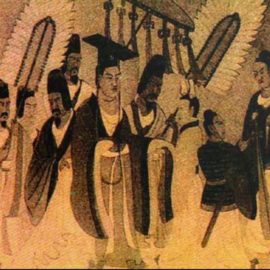

This article is an excerpt from the Shortform summary of "The Art of War" by Sun Tzu. Shortform has the world's best summaries of books you should be reading.
Like this article? Sign up for a free trial here .
In The Art of War, Sun Tzu says, “Appear weak when you are strong, and strong when you are weak.” What does Tzu mean by this? Why would you want to appear weak?
We’ll cover Tzu’s advice for mastering the art of deception and how to make your forces appear weaker than they really are.
The Art of Deception
The goal of any conflict is to control your opponent and overcome them. Controlling their beliefs about your abilities helps you understand their assumptions and plan a strategy accordingly. As a well-known translation of Sun Tzu puts it, “all warfare is based on deception.”
Deception includes feigning weakness when you are strong or professing ignorance when you are informed. Appearing to be weak, unprepared, or small in size can lure your opponent into traps and make them susceptible to misguided actions or responses. Appear weak when you are strong.
For instance, creating a scenario where only a small portion of your force is visible can mislead opponents into thinking they outnumber or outarm you. When they prepare an attack under that guise, they will be ill-prepared for the full strength of your forces.
Another example is allowing your opponent to win small victories or gains. Your opponent may fall victim to greed or an inflated ego, which will confuse and hinder their strategy when the truth is revealed.
Historical Example: Appear Weak When You Are Strong
When a Chinese emperor was strategizing an attack on the Han dynasty, which had joined forces with the Huns, he sent a scout to scope out the Huns’ forces. Ten scouts returned after seeing old and feeble men milling about and reported that the Huns were weak. However, one scout, Lou Jing, saw the placement of these men as a ruse and reported that an attack would be unwise. The emperor punished Lou Jing for this advice and sent a massive force into Hun territory.
Lou Jing had been right. The hidden Huns forces surrounded the emperor’s men and stranded them for a week without supplies. Appear weak when you are strong, and strong when you are weak.
Orthodox vs. Unorthodox Action
Part of your plan to appear weak when you are strong, and strong when you are week, involves orthodox and unorthodox action. In battle, fighting is unremarkable. It is straightforward in action. But victory is attained through the remarkable. Unremarkable and remarkable actions are also referred to as orthodox and unorthodox actions, respectively.
Both orthodox and unorthodox actions are taken during conflict. Ensuring victory means having a command of both orthodox and unorthodox actions.
Orthodox actions are straightforward techniques—tried and true behaviors and formations.
- For example, fighting on the front lines or attacking a valuable territory are orthodox actions.
Unorthodox actions are surprise attacks and other maneuvers outside the typical boundaries of battle.
- For example, ambushes and deception are unorthodox tactics.
Orthodox and unorthodox tactics should be blended to work in harmony. Like the endless combination of colors derived from the five primary colors, there are multiple variations encompassed within the primary actions of orthodox and unorthodox behaviors.
- Orthodox behavior is always direct, and unorthodox behavior is always a surprise.
- But the manifestation of each is endless in its possibilities.
Manipulate what your enemy views as orthodox and unorthodox behaviors. By feigning orthodox behavior, you set your opponent up for attack through unorthodox action. Appear weak when you are strong. For instance, disorganization emerges from organization, fear emerges from bravery, and vulnerability emerges from strength.
- If you want to appear unorganized, you must first be organized.
- If you want to appear cowardly, you must come from a place of courage.
- If you want to appear weak, you must start from a foundation of strength.
- These deceptions will mislead your enemy.
Deception is a great way to gain information about your opponent. Appear weak when you are strong. If they think you are weak and they attack, you know the level of their aggression and greed.
Any time you can confuse or deceive the opponent by appearing weak when you are strong, you force them to adapt. In these adaptations, you can discern their patterns of movement, strength of force, and tendencies to react.
- This information becomes useful in determining how to strategize against them.
- You will know in which situations they will fight and which they will run.
- You can determine when lives will be threatened and when lives can be saved.
- You can find out where the gaps in their strength are, otherwise known as vulnerabilities.
- With this information, you can strategize when attacking is beneficial and when defending is more beneficial.
Remember, appear weak when you are strong, and strong when you are weak to deceive your opponent.
———End of Preview———

Like what you just read? Read the rest of the world's best summary of "The Art of War" at Shortform . Learn the book's critical concepts in 20 minutes or less .
Here's what you'll find in our full The Art of War summary :
- How to mislead your enemies to win the war
- Classic examples from Chinese history to illustrate Sun Tzu's strategies
- How to use spies to gather information and defeat your opponents





